Watching the youngsters still seeing Casa de las Americas as a space of recognition and promotion for their fledgling careers is a satisfaction for those who started out that project and cultural center some fifty years ago. The fact of the matter is that for the youth –that vast population sector of fleeting, sometimes poorly defined frontiers– there’s always a need to show off their ability to both imagine and create. Since the early 1970s,1 Casa de las Americas called for a Latin American Engraving Contest.2 That prompted an interest in graphic production across the region and in delving into different formats and techniques. In the first edition of La Joven Estampa (The Young Looks), young artists like Argentina’s Norberto Onofrio and Cuba’s Antonia Eiriz, Angel Acosta Leon, Alfredo Sosabravo, Carmelo Gonzalez and Lesbia Vent Dumois, Uruguay’s Luis Camnitzer and Mexico’s Arturo Garcia Bustos and Celia Calderon had a chance to display their creations. Three years later, in 1965, the event was renamed as The Havana Exposition and panned out to be a turning point in the promotion of Latin American and Caribbean engraving in our country, even though there were moments in which it also embraced collateral exhibits of international engravers.3 With yearly editions until 1970, The Havana Exposition showed the works of well-known artists like Antonio Berni (Grand Prize, 1969) and a new breed of creators like Brazil’s Artur Luiz Piza (Prize, 1965), Argentina’s Antonio Segui (Grand Prize, 1966), Uruguay’s Jose Gamarra (Prize, 1966) and Miguel Bresciano (Prize, 1967, 1969 and 1970), or Cuba’s Rafael Zarza (Prize, 1968). They were all part of a new generation that now boasts centerpiece positions in the history of Latin American engraving and arts. La Joven Estampa is clinging to that tradition as part of the events sponsored by Casa de las Americas. The span of time between the convulsed 1960s and 70s, in which engraving played a major role in the streets and popular graphic art workshops all the way to 1987 –the year the prize was officially instituted– has witnessed a countless array of collective proposals and artists that today bear the brunt of the continent’s graphic memory. The prize-winning artworks in the Engraving Contests and the Havana Expositions, as well as in the new contest, engulfed the Art Collection from Our America harbored at the institution –valuable heritage in terms of diversity and representation. The La Joven Estampa Prize, the only one of its kind handed out by the institution to young creators below 35 years of age, rekindled the interest of our country in engraving that eventually led to a piecemeal renovation of part of the Havana Experimental Graphic Workshop’s membership and the alumni at the Higher Institute of Arts. That marked a moment in which engraving started striking the right chord again. The National Engraving Meeting was held in 1983, several expositions like Cuba’s Contemporary Engraving (Museum of Colonial Art, 1991) or Vindication of Engraving (La Acacia Gallery, 1994). In the same breath, the La Huella Multiple project was created in 1996 and remains active today. In fact, it’s funny to see that in the 22-year period between 1987 to date, La Joven Estampa has unintentionally turned out to be one of the staunchest promoters of young and talented engraves on the island nation. Out of the ten editions held, Cuban engravers have nabbed awards in nine of them,4 with the top prize going to Mexico’s Demian Flores Cortes in 1995. No wonder most of the contesting artworks come from Cuba, alongside nations like Mexico and Argentina, even though when the final selection seeks to showcase as many pieces from each country as possible in an effort to provide an embracing view of engraving in the region. Based on this idea, other international initiatives stood out as well, all of them zeroing in on engraving. In Latin America, the Latin American and Caribbean Engraving Biennial was convened for San Juan (1970-2001), eventually becoming the San Juan Poly/Graphic Biennial in 2004: Latin America and the Caribbean,5 or large-format events like Rio-Gravura in Brazil (1999) and others such as Mini Print in Barcelona and the Arte della Incisione in Italy. The 2009 Joven Estampa comes to a year of reflection and encounter. The fiftieth anniversary of Casa de las Americas in the backdrop and ten editions of history that put up a new challenge and, above all, a need to renew the interest in it among the youngest talents. What can be done to keep the fire burning, beyond the incentive of money prizes? From the very conception of the event’s image like in 2003, this time around the organizers are trying to make juvenile looks the main issue of the contest, la Joven Estampa is getting a hold on just another young icon that’s been making the rounds since the 1960s: the sneakers they use for playing basketball, skating, break-dancing or walking. Nelson Ponce’s proposal hit the nail right on the head and drew in hundreds of youngsters –not necessarily artists– to the Casa.5 However, I believe that regardless of the postal service’s inconsistency and instability whereby most of the pieces are sent and received by or the poor experience of many of the contesters, La Joven Estampa goes on to be a call for the advance of the graphic arts not only in terms of exhibition and promotion, but also in a theoretical and practical standpoint since it includes a program of workshops, lectures and meetings with guest jury panels that pave the way debates over engraving’s hardships and current possibilities, its insertion in circuits worldwide and in the contemporary arts. Everybody knows that it’s becoming increasingly hard and weird to find graphic works in today’s art exhibitions. It seems that videos, installations, performances, photography and the only formats of expression, whereas painting or engraving are considered “in” by both artists and curators. Then, this is one of the attractive elements about this prize: the possibility of making young talents present engravings and see their pieces in galleries, even bask in the limelight while they’re still in their teens. For this year’s edition, the La Joven Estampa Prize boasted a deluxe jury imbued in the dynamic spirit that the Year of Kinetic Art has given to the Casa in 2009, let alone that young artists like Juvenal Ravelo (Venezuela) and Rogelio Polesello (Argentina), as well as one Cuba’s hardworking researcher on the national art, Jose Veigas, pitched a hand in making this happen. Another key player was Puerto Rico’s Antonio Martorell who, as he did ten years ago, came back to Casa to launch –together to a bunch of young artists– the International Workshop on Interventions in Outer Spaces: The Way Home. One of the highlights of the event was the “A Look into Today’s Kinetic Art” panel that brought together the four guests and shed abundant light on the origins of this artistic expression by the hand –better yet by the words and the works– of their main followers. At the same time, reflections on its footprints in today’s Latin American arts, its influence in Cuba from a visual viewpoint and through the works presented by the Cuban Group of Optic Art –made up of Jorge Fornes, Helena Serrano, Ernesto Briel and Armando Morales, plus other local graphic designers from the 1960s and 70s, were shared among the attendees. Likewise, a personal exhibit entitled La memoria agregada (The Aggregated Memory) by 2007 La Joven Estampa prize-winning artist Octavio Irving Hernandez was mounted. The exhibition explored the contents and textures of an experimental technique called “gluegraphy” and its contributions to the image of the boat –so widely used in the insular discourse of our own country. Octavio’s proposal attempts to “oxygenate” the use of the boat icon through an interaction with the space provided by the Manuel Galich Hall, gluing it to the walls like floating vessels in their transit to other watercourses or wharves. Nonetheless, out of the more than a hundred artists from a baker’s dozen nations that signed up for the contest, the jury handpicked artworks from 45 of them and handed out the Prize to “Open and Close the Eyes” by Milton Raggi Vinueza (Cuba, 1991) for “achieving the overlapping of a phrase, a portrait of it and an excellent visual outcome.” At the same time, the jury doled out Special Mentions to “Gourmet of Artistic Satisfactions” by Pamela Pazmiño (Ecuador, 1984), and half a dozen other mentions that went to Osmeivy Ortega (Cuba, 1980) for the Deserved Caribbean” series; Juan Antonio Ortiz Nava (Mexico, 1983) for “Alice in Wonderland”; Orlando Montalvan (Cuba, 1978) for “Double Impression”; Anyelmaidelin Calzadilla (Cuba, 1975) for “Posterity”; Andres Garavelli (Argentina, 1976) for “Four Nameless Portraits”, and Diober Escalona Rodriguez (Cuba, 1985) for the CDR series. I think if there’s something to reproach the 2009 edition of La Joven Estampa for is the poor conceptual drive of the proposals. Ten editions later, the event calls for the necessary abandonment of skin-deep statements on topics that range from daily tribulations and identity to the artists’ stances. It seems to me that technical mastery is the one thing that counts and there’s no intention to move past that concept. Xylography continues to be a centerpiece, and so are “dry point” and etching in such countries as Mexico. And even though Cuba stands out with a piece like Double Impression by Orlando Montalvan –a huge wooden peg that represents a police patrol unit– there are other outstanding serigraphic pieces wrought with mastery and sensitivity like Posterity by Anyelmaidelin Calzadilla, or works in linoleum like Deserved Caribbean by Osmeivy Ortega. Others scour new format matrixes, such as the CD-supported CDR series by Diober Escalona. As far as recurrent themes are concerned, such as nonidentity and derangement so commonly found in Argentina during years of repression, Four Nameless Portraits by Andres Garavelli, makes use of offset impressions on tin sheets with a visual result that could have been better wrought, regardless of the intentional unfinished, dehumanized appearance that somewhat refers to the exercise of power and terror imposed on mankind. Equally striking is the fact that artists do not make use of space as part of their contents and the possibilities of their pieces. We’re fully aware of how improbable and costly it might be for Latin American artists to send 3D artworks. But that was not a problem for Cuban creators who were able to move their pieces, thanks to geographical proximity and transportation access; however, this kind of proposal was widely ignored. With the sole exception of the winning piece, none of the selected artworks interacts with space. As a matter of fact, there seems to be a regression in this sense when compared to previous editions. Open and Close the Eyes by prize-winner Milton Raggi reflects from the title itself on the elementariness of a phrase overlapped time and again in acetated serigraphy, using red and black colors –hues that are strongly inserted in the nation’s imaging– to depict the danger of reiteration, the loss of the aura in the blinking of an eye, the indifference or invisibility of the discourse that might lead to conceptual emptiness, and the need to take an active or passive stance toward it. The piece is no doubt a very fresh way of addressing topics of profound ethical and political repercussions without getting downgraded to a pamphlet category. I think it would have worked much better with a red light hanging in the background in an effort to make the most of every acetate sheet and its monochromatic character, instead of spreading them on the gallery floor –perhaps my arrangement proposal would have thwarted the original concept and goaded spectators into a divergent reading. The work of these young artists bears out the tremendous possibilities engraving has to offer as a means of expression. Experimentation going hand in hand with tradition makes this prize an indispensable event, the necessary meeting ground in the expositional circuit of international graphic arts. Once again, storming the fifty-year-old Casa to chip in ideas for the future from the artworks of a new breed of talents is a way to clinch the continuation of engraving as an expression –either from a traditional or renovating viewpoint. That seems to be the road ahead. The date has been set: May 2011, Casa and its Joven Estampa.
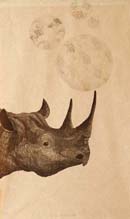
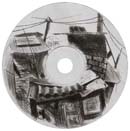


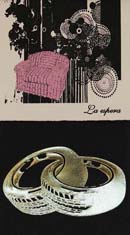
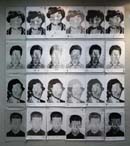
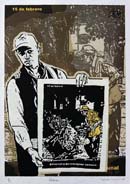
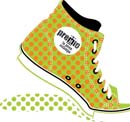
Related Publications

How Harumi Yamaguchi invented the modern woman in Japan
March 16, 2022
Giovanni Duarte and an orchestra capable of everything
August 26, 2020







